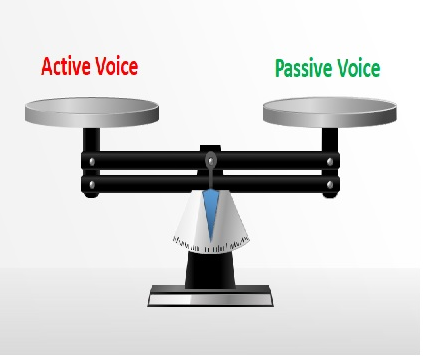Active voice and passive voice are two different ways of constructing sentences. In active voice, the subject of the sentence performs the action expressed by the verb. For example, “The dog chased the cat.” In this sentence, “the dog” is the subject performing the action “chased.”In passive voice, the subject undergoes the action expressed by the verb. The focus is on the receiver of the action rather than the doer. For example, “The cat was chased by the dog.” In this sentence, “the cat” is the subject receiving the action “was chased.”
Understanding when to use active voice and when to use passive voice can help improve the clarity and effectiveness of your writing.Active voice is often preferred in writing because it is more direct, concise, and engaging. It clearly shows who or what is performing the action in a sentence, making the writing more dynamic and easier to understand. Active voice is commonly used in most types of writing, including essays, articles, stories, and instructions.
Passive voice, on the other hand, is used when the focus is on the receiver of the action rather than the doer. It can be useful in situations where the doer of the action is unknown, unimportant, or should not be emphasized. Passive voice is also used to create a sense of objectivity or formality in writing. It is often found in scientific reports, formal documents, or when the doer of the action is not relevant to the message being conveyed.
Uses of active and passive voice:
In general, active voice is preferred for most writing situations as it is clearer and more engaging. However, there are times when passive voice may be more appropriate or necessary depending on the context and purpose of the writing.Active voice is often preferred in writing because it is more direct, concise, and engaging. It clearly shows who or what is performing the action in a sentence, making the writing more dynamic and easier to understand. Active voice is commonly used in most types of writing, including essays, articles, stories, and instructions.
Passive voice, on the other hand, is used when the focus is on the receiver of the action rather than the doer. It can be useful in situations where the doer of the action is unknown, unimportant, or should not be emphasized. Passive voice is also used to create a sense of objectivity or formality in writing. It is often found in scientific reports, formal documents, or when the doer of the action is not relevant to the message being conveyed.
IActive voice:
1. The chef prepared a delicious meal for the guests.
2. The teacher explained the lesson to the students.
3. The dog chased the cat up the tree.

Passive voice:
1. A delicious meal was prepared for the guests by the chef.
2. The lesson was explained to the students by the teacher.
3. The cat was chased up the tree by the dog.
In these examples, you can see the difference between active voice (where the subject performs the action) and passive voice (where the subject receives the action).
Difference between active and passive voice:
Rules for usage of voices:
In summary, active voice is more straightforward and places emphasis on the doer of the action, while passive voice shifts the focus to the receiver of the action. Both voices can be used effectively depending on the context and what you want to emphasize in your writing.Here are some general rules for using active and passive voice in your writing:
**Active Voice:**
1. Use active voice to make your writing more direct, clear, and concise.
2. Use active voice when the subject is the doer of the action and you want to emphasize the subject’s role.
3. Use active voice when the doer of the action is more important than the receiver of the action.
4. Use active voice to engage the reader and create a sense of immediacy.
**Passive Voice:**
1. Use passive voice when the focus is on the receiver of the action rather than the doer.
2. Use passive voice when the doer of the action is unknown or less important.
3. Use passive voice when you want to be vague about who is responsible for the action.
4. Use passive voice to create a more formal or impersonal tone.
When deciding between active and passive voice, consider the context of your writing, the emphasis you want to give to the subject or object, and the overall tone you want to convey. Both active and passive voices have their own strengths and can be used effectively in different situations.

